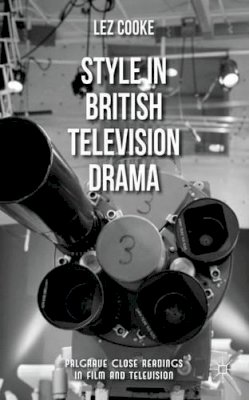
Stock image for illustration purposes only - book cover, edition or condition may vary.
Style in British Television Drama
L. Cooke
€ 66.34
FREE Delivery in Ireland
Description for Style in British Television Drama
Hardcover. This pioneering book provides detailed analysis of scenes from nine British television dramas produced between 1954 and 2001. Taking dinner table scenes as a recurring motif, the study analyses changes in televisual style with reference to production practices, technology, aesthetic preferences, and social and institutional change. Series: Palgrave Close Readings in Film and Television. Num Pages: 172 pages, biography. BIC Classification: 1DBK; APTS; APTX. Category: (P) Professional & Vocational. Dimension: 224 x 137 x 15. Weight in Grams: 334.
This pioneering book provides detailed analysis of scenes from nine British television dramas produced between 1954 and 2001. Taking dinner table scenes as a recurring motif, the study analyses changes in televisual style with reference to production practices, technology, aesthetic preferences, and social and institutional change.
This pioneering book provides detailed analysis of scenes from nine British television dramas produced between 1954 and 2001. Taking dinner table scenes as a recurring motif, the study analyses changes in televisual style with reference to production practices, technology, aesthetic preferences, and social and institutional change.
Product Details
Format
Hardback
Publication date
2013
Publisher
Palgrave Macmillan United Kingdom
Number of pages
176
Condition
New
Series
Palgrave Close Readings in Film and Television
Number of Pages
160
Place of Publication
Basingstoke, United Kingdom
ISBN
9781137265913
SKU
V9781137265913
Shipping Time
Usually ships in 15 to 20 working days
Ref
99-15
About L. Cooke
Lez Cooke is a Research Fellow in the Department of Media Arts at Royal Holloway, University of London. He is the author of British Television Drama: A History (2003), Troy Kennedy Martin (2007) and A Sense of Place: Regional British Television Drama, 1956-82 (2012).
Reviews for Style in British Television Drama
'Cooke's is an interesting and tightly-focused book concerned only with the development of aesthetic styles in television, due primarily to changes in technology, but also influenced by changing ideas of television style.' - Derek Johnston, Critical Studies in Television 10.1
.png)